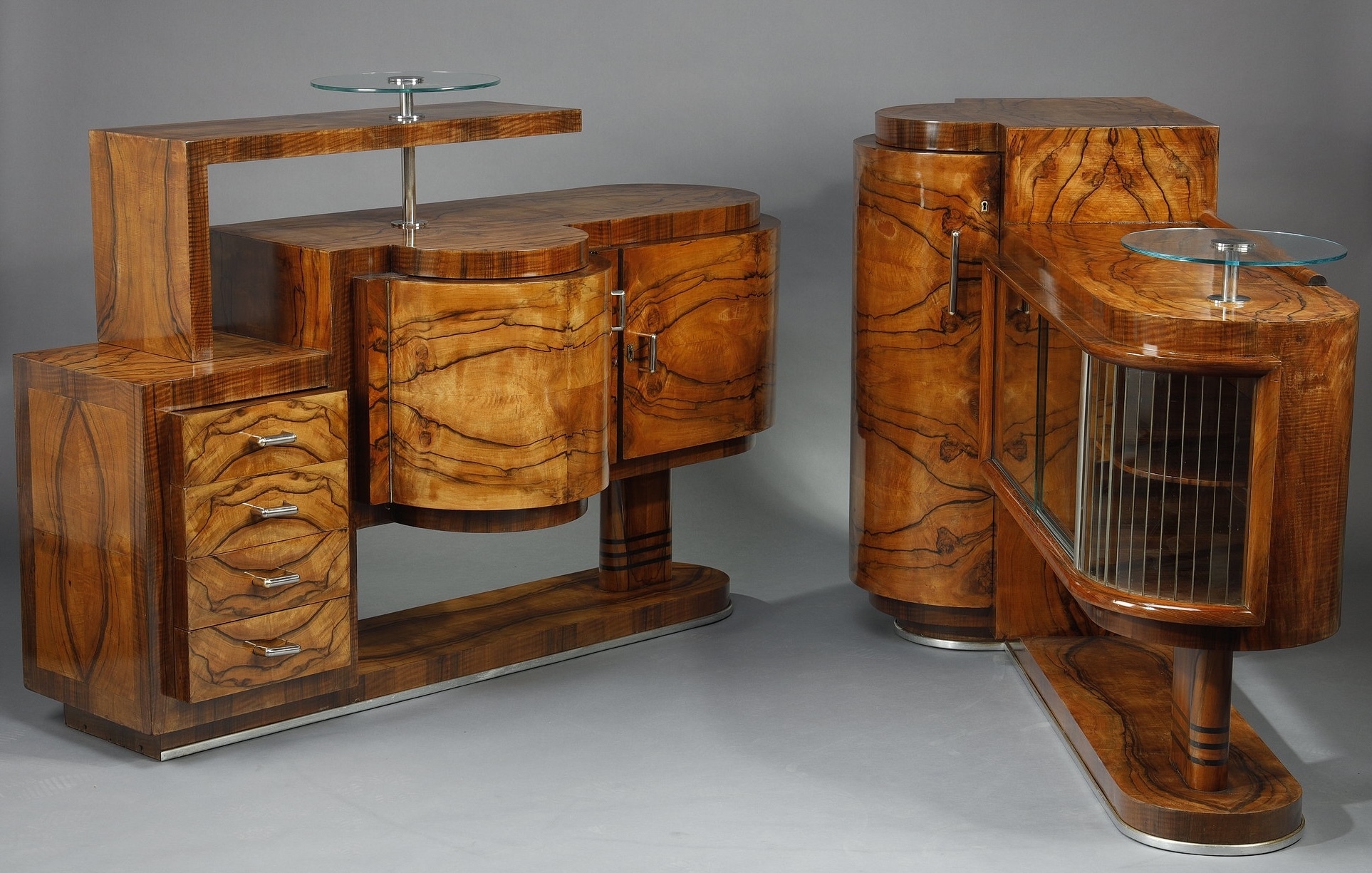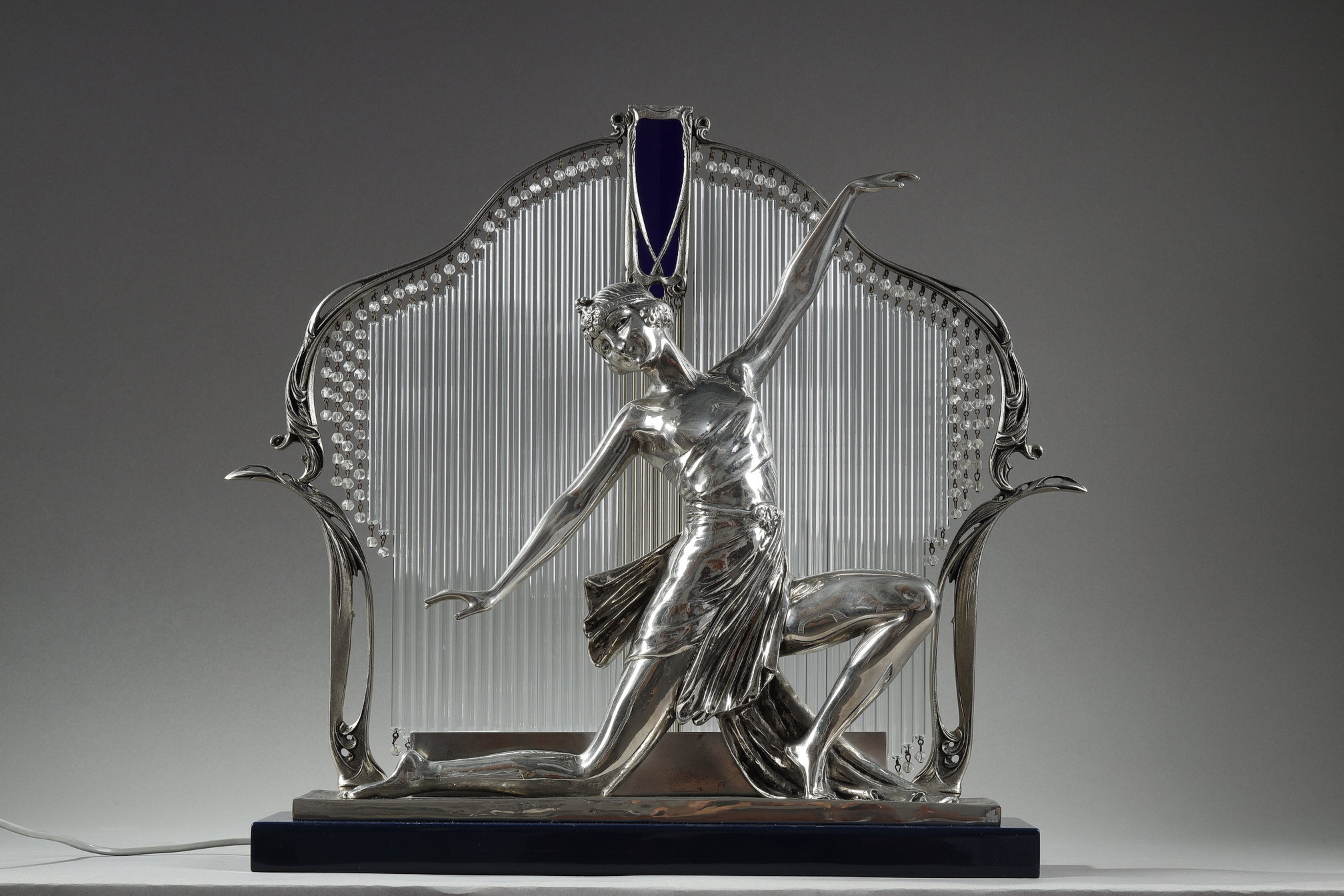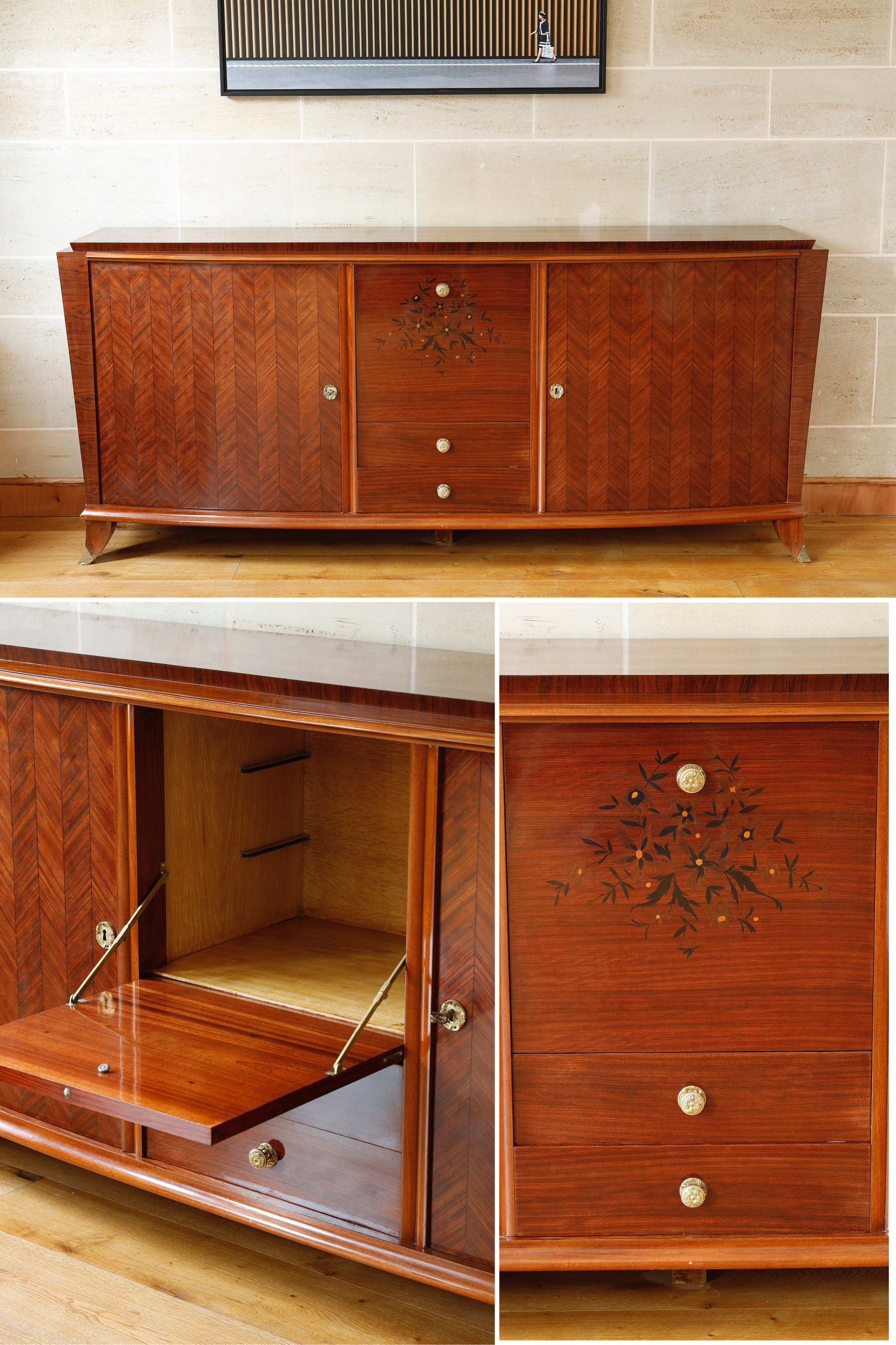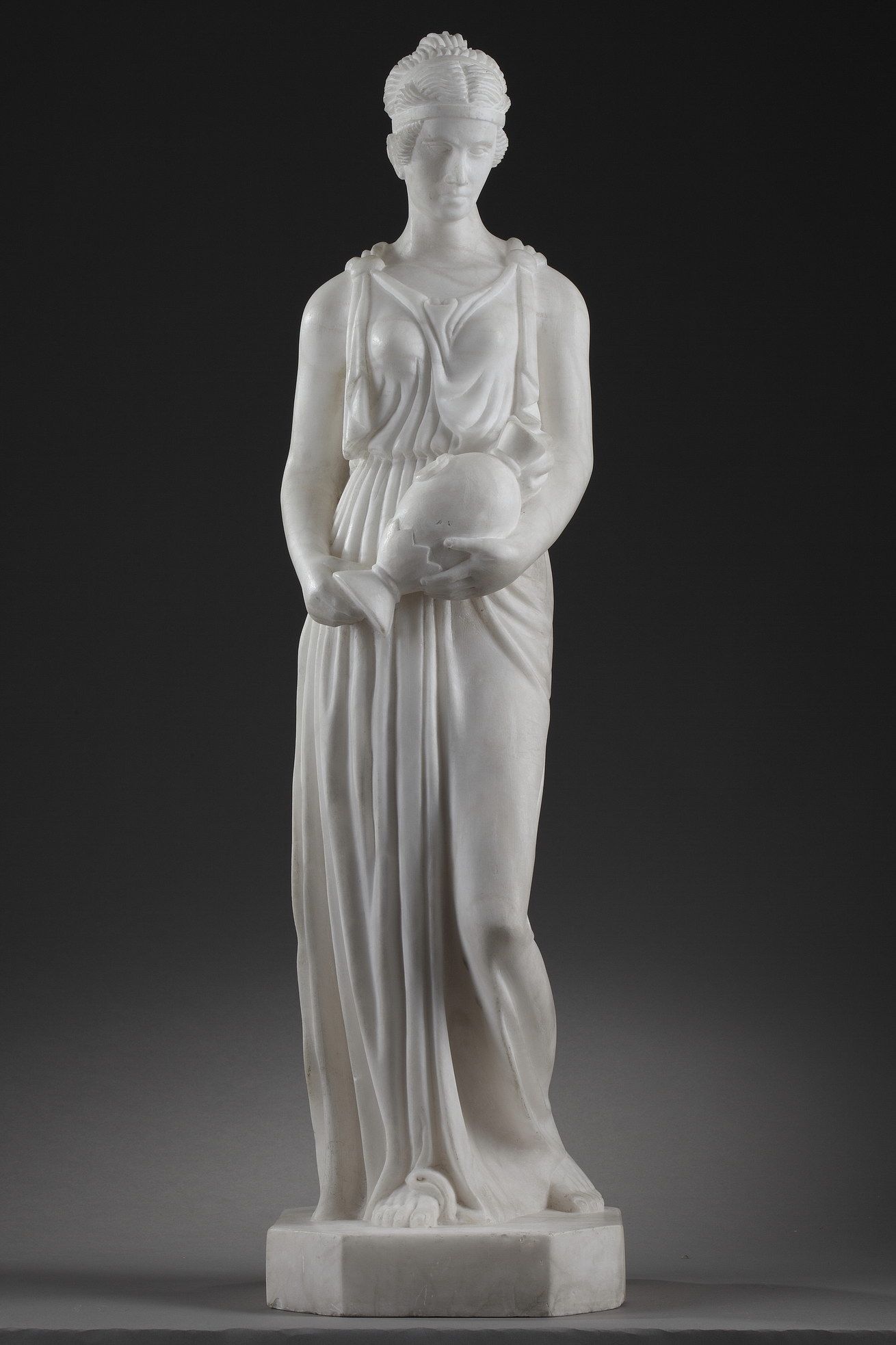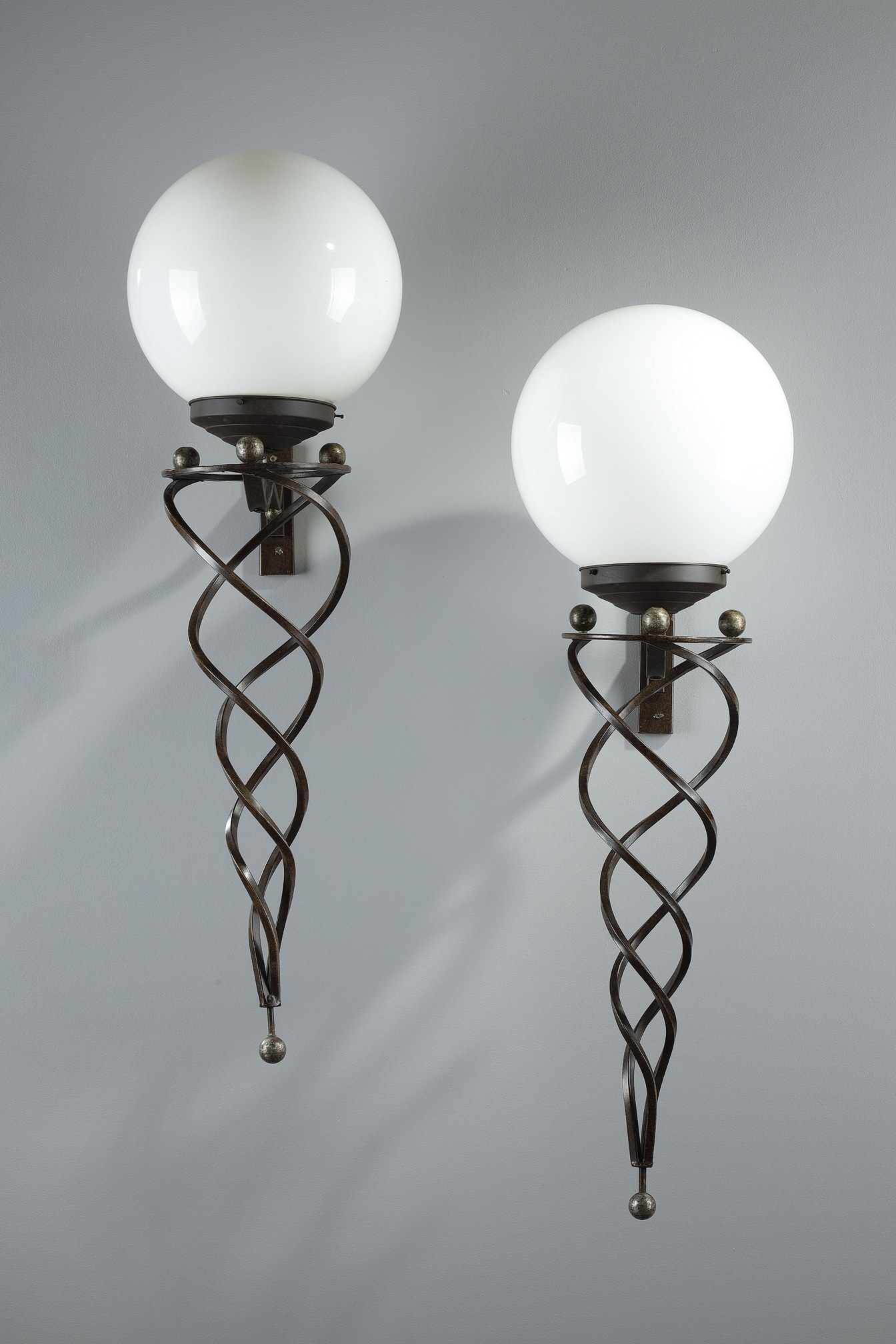Art Deco, the modernity of the Roaring Twenties
07.12.21
Who hasn't dreamed of having a drink in a sublime Art Deco setting as if you were living in the Great Gatsby? Often considered as the emblematic aesthetic of the Roaring Twenties, Art Deco is a very rich artistic movement as much in its diversity of forms as in the quality of its creations. It represents the escape of a youth who wants to rebuild itself after a devastating war. But how was this style so characteristic of an era created?
How did Art Deco come about?
It's "all the nervous tension built up and not spent during the war", says Scott Fitzgerald in Jazz Age in 1931.
However, the beginnings of this style appeared in the 1910s. While Art Nouveau was still in full swing, its plant-like curves were not always popular. They were indecent and ridiculous to its detractors, who called it the "noodle style". They sought greater simplicity of line and more sober forms. It is a kind of return to order that can already be felt in German and Viennese designs. It also comes from an aesthetic diruption with Serge Diaghilev's Ballets Russes inspired by A Thousand and One Nights composed of dances, music and paintings in 1909. There was a resurgence of the Orient as a major source of inspiration in both artistic creations and Parisian social life. The famous Paul Poiret organised a large costume party at his home called the Thousand and Second Night to which many artists were invited. It was a new era that was taking shape. Unfortunately, the First World War broke out in 1914, interrupting the momentum of all these new ideas.
Example of an Art Nouveau office
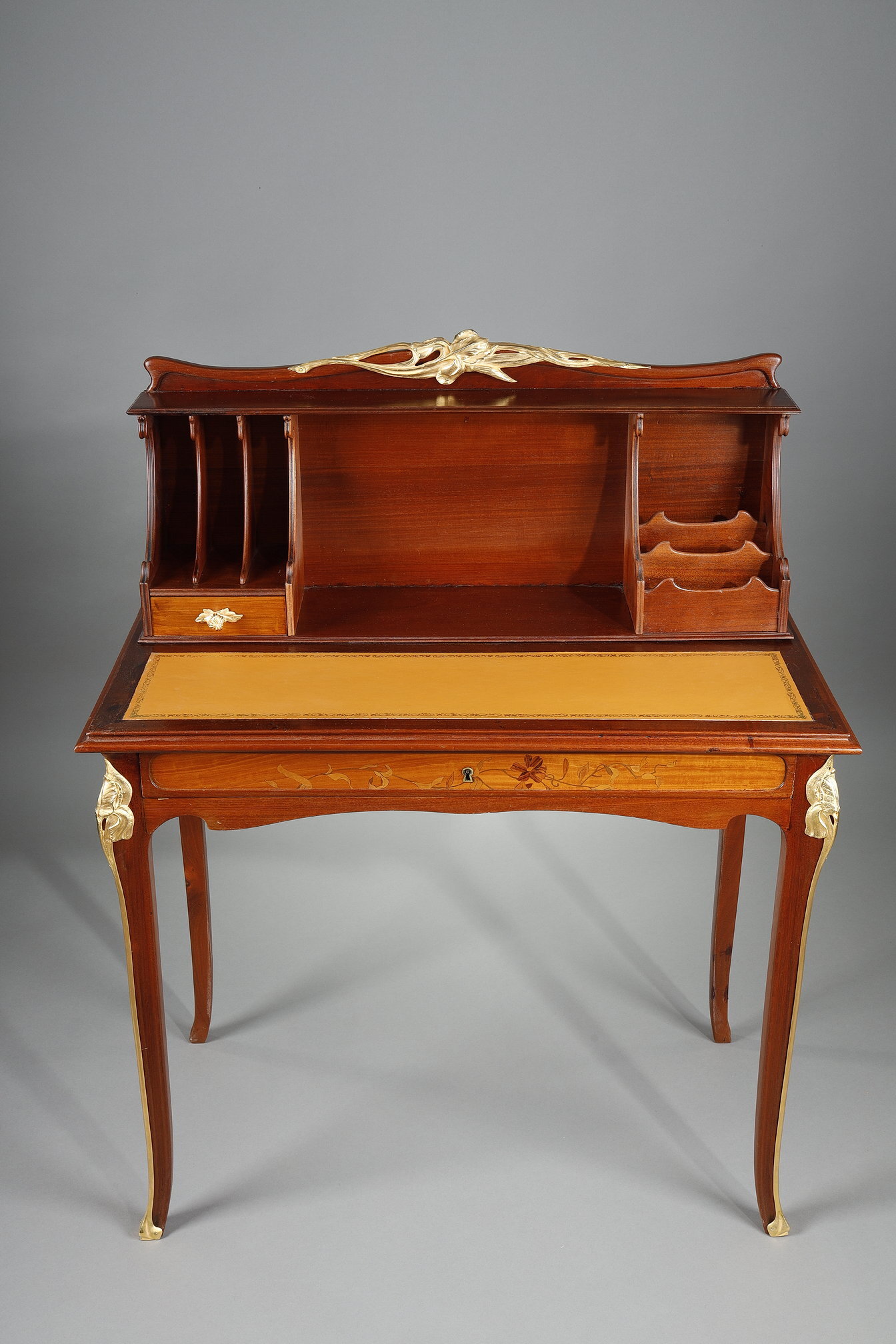
Art Deco blossomed after returning from the battlefield. It was the Roaring Twenties, and young people threw themselves into permanent pleasures to forget the horrors of the trenches. They were looking for whim and entertainment. The New Style, modern style or modern Zig Zag as it was called, was created. It was in Paris that it became important. In the capital of delights, was held in 1925, the International Exhibition of Decorative Arts and Modern Industries. This great trade fair presented 21 countries and was visited by more than 16 million people. In eight months, it revolutionised architecture and the decorative arts throughout the world. This style was found in hotels, bars, liners and cinemas, luxurious and comfortable places frequented by the youth of the 1920s. The rapid spread of this aesthetic through the development of the means of communication was also carried by Americans that came to benefit from the devalued French franc. Derivatives of this style can be found in Brazil, Japan and especially in the United States, which became the cradle of the Stream line style.
We had to rebuild. New cubic architectures were built, with new, geometric, modernist designs. From buildings, motifs and reflections spread to the decorative arts. The aim was to represent modernity in motion and escape, with new, sometimes provocative choices. The simplification of lines was agreed upon, but this did not mean an impoverishment of creations. Inspiration comes from all over the world: Japan, China, the Far East and Africa. New materials, both exotic and technologically advanced, were explored. The Roaring Twenties brought with them a host of innovations that were to revolutionize the decorative landscape.
Decors and Ornaments
In the 1920s-1930s, a new concept emerged, that ofartist decorators who offer unique furniture adapted to the tastes of young people. Among the big names were Ruhlmann, Jules Leleu, Paul Iribe, or even Maurice Dufrêne and Charles Dudouytwhom we include in our collection. Free of manifesto, they were free to embark on the new forms for which the period of the Roaring Twenties while remaining faithful to the forms of the past. The aim is to modernize tradition. Art Deco was a kind of return to order, accentuated by the Depression of 1929 and the worldwide economic depression of the 1930s.
A sideboard in the style of Jules Leleu:
The subjects are eclectic and diverse, and we can only cover a superficial but essential part of them.
Perhaps the most obvious is the rejection of the sinuous Art Nouveau line. There is a move towards softer, more lyrical imagery. An approach to simplification that comes first from sober neoclassicism before turning to the art of the Avant-Gardes: cubism, orphism, German expressionism, even if they are not necessarily distinguished from each other, which offer a new pictorial language. It is an evolution towards geometry, which is considered the essence of the modern mechanised world. The forms are pure, circles, squares and straight lines, cut-out or fragmented motifs. Nature itself loses its wildness with synthesised forms brought back to their essence. The rose becomes a flattened and geometrized motif to the extreme. Art Deco sought to tame nature by bending it to the aesthetics of the time. It is proof of the dominance of modern man. It subdues nature through intellectual and technological progress.
 Bronze sculpture "Two seagulls on a wave" by Enrique Molins
Bronze sculpture "Two seagulls on a wave" by Enrique Molins
There is also an attempt to represent speed and movement in a very modern way. The automobile appeared in the streets of Paris, liners made it possible to cross the oceans more and more quickly, and aviation was dreamed of. These principles are applied to the decorations. The panther becomes an elegant evocation of the fluidity and fiery run-up of the period. Here you can find a bronze print of " Two seagulls on a wave " by Enrique Molins which clearly shows this desire to use the animal kingdom to evoke speed and technological projects. The rapid swooping descent of the birds towards the ocean is an allusion to the aerobatic aircraft shows that fascinate the public.
Alabaster sculpture "La Samaritaine", Art Deco
Women also took on an increasingly important role. Female emancipation is represented by the garçonne. Its slim, sleek silhouette comes from fashion designers such as Gabrielle Chanel and Paul Poiret. In Art, the woman can be seen in her contemporary outfits, long and elegant. She can be seen in Tamara de Lempicka 's canvases or in sculptures as a dancing figure accompanied by veils that she spins around herself. She also takes the place of the Antique goddess, with the same stylized, stretched, almost Mannerist canons of beauty. The figure of the Samaritan is particularly prominent, and many restaurants bear this name.
Finally, there's a certain fascination with ancient civilizations, fueled by the many archaeological discoveries in Mesopotamia, Mesoamerica and, above all, Egypt. The discovery of Tutankhamen's tomb by Howard Carter in 1922 triggered an avalanche of Egyptian-style motifs in Art Deco productions. However, generic themes such as lotuses, scarabs and hieroglyphs were mostly used.
Materials of the Modern World
The 1931 Paris Colonial Exhibition brought African art to the attention of the French population. The abstract motifs and dark, black or brown colour schemes are retained. But above all, there was a certain taste for materials, exotic woods such as Macassar ebony or rosewood that came from far away. They are considered for their own aesthetic quality, the material becomes an ornament in itself. This justifies the use of numerous veneers and inlays, ivory, mother of pearl, mirrors or shagreen, fish leather. These are luxury materials sometimes very expensive. It is a debauchery of luxury that does not want to make any concessions.
Lighting was given greater scope to magnify spaces and signify progress. Electricity was everywhere, in grand salons and restaurants, but also in the comfort of one's own bedroom, with the development of numerous table lamps juxtaposing chrome and wood. Technical progress was signified by new techniques. There was a particular infatuation with glasswork in the early 1920s. It reflected modern, optimistic, forward-looking taste. In chandeliers, glass captures the movement of a frozen fountain as an echo of the dynamism of the modern world.
Around the 1930s, the United States took over and the style evolved towards more simplicity, without any ornamentation. This made it possible to adapt it to the mass production that was developing. Art Deco became cheap to meet the needs of the Great Depression. This allowed for large-scale distribution, which brought aesthetics into all homes, even modest ones. To satisfy consumer desire, materials that were still unknown to the public, such as plastic and aluminium, were added. Art Deco characterises modern America in its consecration of consumption and unbridled individualism. The aesthetic high point was reached at the 1939 New York World's Fair.
Conclusion
After the Second World War, Art Deco declined. It was widely criticized by a parallel movement, modernism. Although it originated with the same 1925 exhibition, it evolved differently. Led by Le Corbusier, modernist designers found that the display of luxury was no longer in good taste. The post-war period was one of austerity, marked by rationalism and functionalism. Ornamentation is unnecessary and "must be regarded as suspect" says modernist critic Herbert Read. This art historian even went so far as to say that Art Deco should be struck from the History of Art.
Fortunately, the antique dealers of the 1960s disagreed. Shunned by cultural institutions, it was the professionals of the objets de l'art trade who safeguarded Art Deco furniture considered outmoded and of no historical interest. Their efforts paid off in 1966, when the first retrospective was held at theUnion Centrale des Art Décoratifs, now the Musée des Arts Décoratifs, under the name " Style 1925 ". This was the start of a great wave of recognition. The term Art Deco became part of everyday vocabulary in the 1970s. Taste for this world accelerated in the 1980s, reaching the general public with the release of the film Gatsby the Magnificent, starring Leonardo DiCaprio in 2013.
Art Deco therefore has a bright future ahead of it, whether in the decorating chains that produce copies, or above all in the originals, which retain a trace of the effervescence of the Roaring Twenties.
Bibliography
- Histoires de l'Art Deco, José Alvarez, 2010
- the Art Deco style, Ghislaine Wood, 2003
- Art Deco, 1910-1939, Tim Benton, 2003


